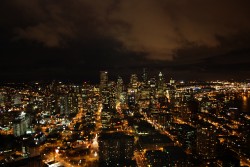- August 30, 2015
- Posted by: Catalyst
- Category: Business Energy News

According to a new report from National Grid, the risk of blackouts this winter has increased due to the closure of power stations.
The electricity system surplus will be just 1.2% this winter, the lowest level in a decade, the gas and electricity operator said.
In order to try and negate this issue, National Grid has taken steps to secure 2.56GW of additional capacity for the winter and has put contracts in place with large power users to reduce their demand at key times. The result is an increase in the margin to 5.1%.
Cordi O’Hara, National Grid’s Director of Market Operation, said: “Together with the tools we already use to balance the network these additional services will significantly increase the energy reserve available this winter.”
Fortunately, gas supplies are not considered an issue.
National Grid’s figures were released as part of its report into winter 2014-15, as well as part of consultation on its plans for winter 2015-16.
Energy Minister Andrea Leadsom said: “Our plan to power the economy is working – and it means that the lights will stay on this winter as well as making sure our homes and businesses have the gas and electricity they need in the future.”
However, Scottish Energy Minister Fergus Ewing said the early closure of the Longannet coal-fired power station in Fife is making the problem worse.
“The situation of narrowing capacity margins will only be exacerbated if Longannet closes prematurely,” he said, adding:
“Given the need to address shrinking capacity margins it makes no sense to cancel planned onshore wind developments, as the UK government is doing through the removal of financial support.”
The Head of External Affairs at the Renewable Energy Association, James Court, said the UK Government needs to come up with an energy storage strategy to cope with winter demand.
The growth of the solar power industry in the UK is supplying enough energy to store, he said.
“It is essential that the government adopts new technologies to solve these ongoing grid problems, both to prevent increasing bills for consumers and to provide energy security.”
